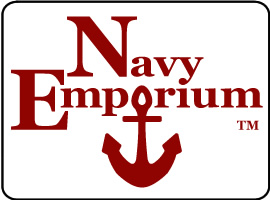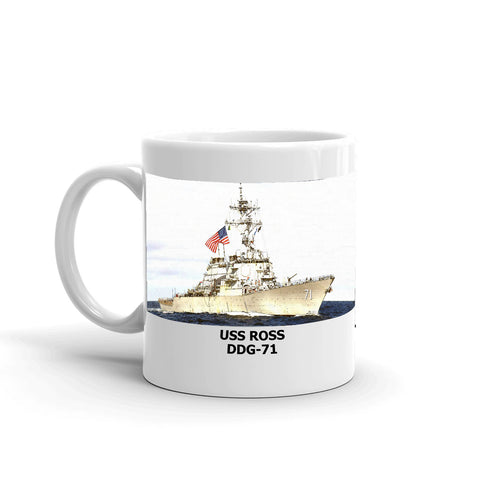The designation "USS Ross DDG 71" honors Captain Donald Kirby Ross, an officer who displayed exceptional valor during both World War II and the Korean War. In recognition of Captain Ross' actions during the Battle of Leyte Gulf in 1944, he was awarded the Navy Cross. By naming this ship after him, the US Navy proudly commemorates Captain Ross' bravery and leadership while ensuring his legacy endures.
Among its features is the Aegis combat system integrated into the USS Ross. This cutting edge system empowers the ship to simultaneously detect, track and engage targets in environments- be it in the air or underwater, significantly augmenting its combat capabilities. This advanced technology gives the USS Ross an advantage in naval warfare. Moreover, the ship is equipped with a launching system (VLS) that can launch Tomahawk cruise missiles and other advanced weapons.
Ever since its commissioning on June 28, 1997, the USS Ross has played a role in military operations and exercises worldwide. The ship has been involved in missions supporting Operation Enduring Freedom, Operation Iraqi Freedom and Operation Odyssey Dawn. Its versatility and adaptability have made it an invaluable asset to the US Navy ensuring security and projecting power across the globe.
As part of the Arleigh Burke class, the USS Ross belongs to the destroyer class in the US Navy. These ships are designed to provide mission capabilities such as anti aircraft, anti surface, and anti submarine warfare. With their radar systems, weaponry and cutting edge technology, the Arleigh Burke class destroyers serve as the backbone of the US Navy's surface fleet.
The USS Ross was officially put into service in Charleston, South Carolina under the command of Commander Thomas J. Dickinson. The ships motto, "Fortune Favors Valor" epitomizes the dedication and spirit of its crew. Over 300 sailors call the USS Ross home, working tirelessly to ensure the ship is always ready for action and achieves its mission objectives. Their unwavering commitment to excellence and duty drives the performance of the USS Ross on the seas.
Nautical Titan; The Steel Sinews of USS Ross DDG 71
The USS Ross DDG-71, an imposing representation of strength, is a guided missile destroyer belonging to the Arleigh Burke class within the United States Navy. The ships design showcases naval engineering expertise measuring 505 feet in length and weighing over 9,000 tons. Powered by four gas turbine engines, it can reach speeds exceeding 30 knots, allowing it to swiftly navigate across expanses. With its steel hull, the USS Ross provides a defense against substantial damage while ensuring sailor safety in challenging circumstances.
The USS Ross is not only a force to be reckoned with physically, but it also possesses a cutting edge technological infrastructure. Its AN/SPY 1D radar system, serving as the ships eyes, can simultaneously track targets which offers crucial situational awareness during intense combat scenarios. Furthermore, equipped with the AEGIS Combat System, the USS Ross can effectively guide weapons to neutralize enemy targets. This digital command center enables the USS Ross to operate seamlessly in threat environments ranging from warfare, to ballistic missile defense.
The USS Ross is armed extensively and boasts a range of weapons capable of engaging targets in the sky, on the surface, and below water. At its core lies an armament featuring 96 launch system (VLS) cells that have the capability to deploy various missiles- including Tomahawk cruise missiles for precision strikes, Standard Missile 3 for ballistic missile defense purposes, and ASROC anti submarine rockets. Complementing these capabilities are two Mk 141 Harpoon Missile launchers specifically designed for ship warfare scenarios. Together these armaments provide firepower, against enemy vessels.
With its cutting edge system, this vessel excels at detecting and monitoring submarines. To tackle threats head on, it is armed with two sets of torpedo tubes that can launch Mk 46 or Mk 50 torpedoes- providing a formidable defense. Additionally, the ship carries two MH 60R Seahawk helicopters that serve as both eyes and ears beyond the horizon, further enhancing its surveillance capabilities. With this combination of sensors and weaponry, the USS Ross stands as a force in undersea warfare.
The Evolution of USS Ross DDG-71
Since its commissioning in 1997, it has undergone upgrades to keep pace with changing maritime conflict scenarios. Notably it has been retrofitted with the Aegis Baseline 9 combat system, significantly bolstering its air defense capabilities against missiles while also improving surface warfare effectiveness. Equipped with the AN/SPY 1D phased array radar system, it can simultaneously track over 100 targets- an advantage for maintaining situational awareness. The USS Ross showcases an array of mission capabilities that span a range of tasks. From maintaining a presence and managing crises, to asserting sea control and projecting power, this ship is truly versatile. Its ability to engage in air, surface and subsurface battles simultaneously makes it a force to be reckoned with. Equipped with Tomahawk cruise missiles, Standard Missile 3s and two MK 41 VLS for missile launches, the USS Ross stands as an asset in any encounter.
The invaluable contribution of the USS Ross DDG-71 to the US Navy fleet cannot be overstated. It has played a role in operations and exercises consistently demonstrating resilience and reliability. The deployment of this vessel in the Black Sea and Mediterranean Sea has been instrumental in fostering peace and stability within the region. Moreover, through its participation alongside NATO allies, it has significantly bolstered maritime security.
As the USS Ross DDG-71 charts its course into the future, its significance within the US Navy fleet only continues to grow. With the Navy's increasing emphasis on distributed lethality and network centric warfare, the USS Ross DDG-71 plays a role due to its capabilities and adaptability. Its seamless integration with platforms and systems ensures it remains a cornerstone of the Navy's strategy. The USS Ross DDG-71, a reflection of naval strength, continues to navigate through changing times- always prepared to face any forthcoming challenges.
Memories Aboard the USS Ross (DDG-71): A Crew's Journey
The USS Ross (DDG-71) holds a special place in the hearts of its crew members, each of whom contributed to the ship's legacy. This article explores the memories and experiences shared by former sailors who served aboard this remarkable destroyer.
Maarten Kok, an exchange officer from the Netherlands, recalls his time aboard the USS Ross. He fondly remembers the crew's camaraderie during missions in the Caribbean and their remarkable involvement in the Adriatic, where they played a crucial role in the conflict, leaving an indelible mark on his career.
For GM3 Thomas 'Ziggy' Zagorski, the USS Ross was his first and only ship. He speaks highly of the crew's exceptional teamwork and credits the skills he acquired on board for his successful career with Lockheed Martin. The Ross left him with a lasting sense of pride and accomplishment.
GSMC Jeff Mansfield proudly declares the USS Ross as the best ship on the waterfront. He retired in 2005 and transitioned into a management role as a Six Sigma Black Belt. His time aboard the Ross left him with a deep sense of appreciation for the crew and the rewarding experiences they shared.
GSM2 Markzel Ramas admits uncertainty about sharing his memories but decides to do so anyway. He expresses relief about nearing the end of his time on board the USS Ross, sending a shout-out to all GSMs and bidding peace to his shipmates.
IC2 Dennis Brozak acknowledges the guidance and mentorship he received from fellow sailors. He expresses gratitude to IC1 Baker and others who played a pivotal role in his Navy career. His journey on the Ross allowed him to develop valuable skills.
FC3 John Sarnecki reflects on his decision to leave the Navy and pursue higher education. He is now happily married and attending Purdue University full-time, emphasizing the importance of making the most of the GI Bill for those who choose civilian life.
OS2(SW) Mike 'Ro-Ro' Rorabaugh reminisces about the early days of his Navy career. He misses the camaraderie and the routines, even though challenges arose after December 2001. He bids farewell to his friends, leaving a playful message behind.
CW03 Robert Gazzara proudly recalls being a part of the engineering plank owners on the USS Ross. He describes the crew as the "BEST of the BEST" and cherishes the memories of the friendships and hardships that helped shape him.
IT2 Michael Cazares shares his unique journey, transitioning from the USS Ross to becoming a Marine. He humorously teases about the challenges he encountered and announces his intention to return to the Ross in 2009.
MR2 Roy Rusch fondly remembers the USS Ross as the "baddest destroyer in the fleet." He acknowledges the ship's legacy and reminisces about the good days when he was a part of the crew. Roy now works as a Design Engineer in the civilian world.
Navigating Through History; The USS Ross DDG-71
The USS Ross DDG-71, a member of the United States Navy, has a diverse and thrilling deployment history to the vast oceans it traverses. Since its commissioning in 1997, it has been deployed to regions including the Mediterranean, Baltic, and Black Seas. Its role as a deployed vessel in Rota, Spain positions it at the forefront of international naval operations. From conducting security missions, to engaging in exercises, the presence of the Ross has been significant and essential in upholding global maritime security.
The USS Ross hasn't just stood by as an observer in conflicts. She has actively played a role in Operation Iraqi Freedom launching Tomahawk missiles to neutralize threats and contribute to Iraq's liberation. Her offensive capabilities have been on display during US led operations against ISIS. The Ross's involvement in these conflicts highlights her role in the US Navy's global defense strategy.
The USS Ross DDG-71 is well acquainted with recognition and praise. Her dedicated service has earned her accolades, including the Armed Forces Expeditionary Medal and the NATO Medal for her contributions to Operation Active Endeavour. Additionally, she has been honored with Battle Efficiency "E" awards, showcasing the ships readiness and exceptional performance. These awards stand as a testament to the Ross's commitment, to excellence.
The legacy of the USS Ross DDG-71 is characterized by unwavering dedication towards defending both the United States and its allies. As she sails through the oceans, her past acts as a guiding light for the mission of the US Navy. The Ross represents America's naval strength and its participation in conflicts showcases the courage and commitment of its crew members. The accolades and praises it has received are like shining stars, illuminating a path of service that leaves a lasting impact, on history.
USS Ross DDG-71 Ship Specifications
| Specification | Details |
|---|---|
| Class | Arleigh Burke Class Guided Missile Destroyer |
| Commissioned | July 30, 1997 |
| Displacement | 8,373 tons |
| Length | 504.5 feet |
| Beam | 67 feet |
| Draft | 20 feet |
| Speed | 30+ knots |
| Complement | 370 |






